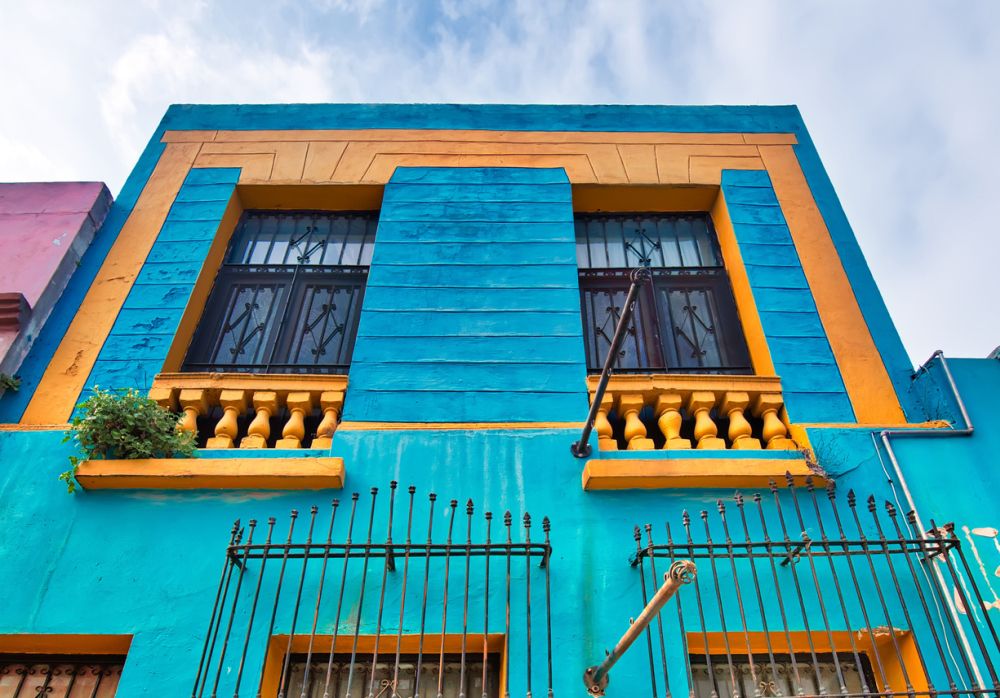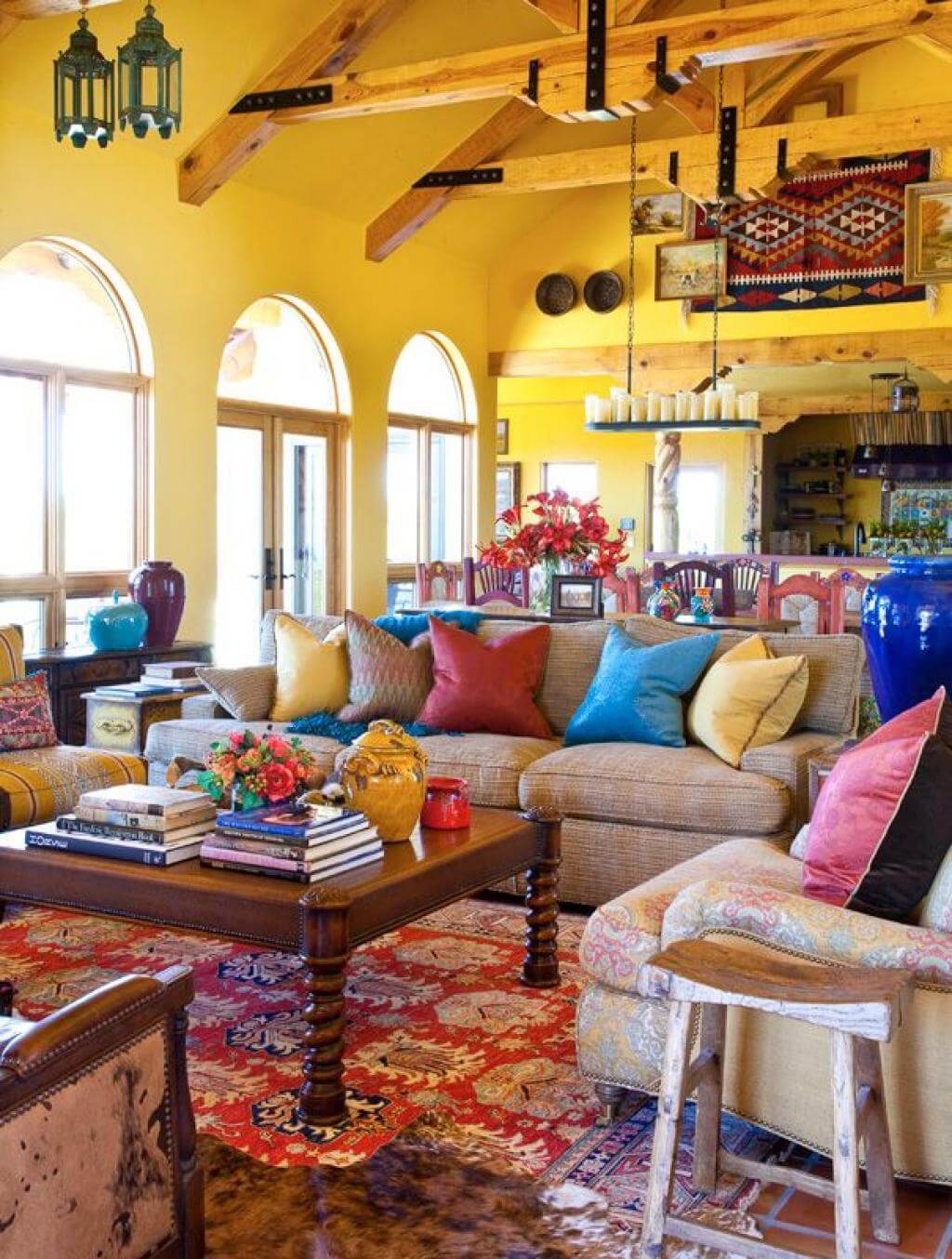Table Of Content

One of the most recognizable characteristics of a hacienda-style home is the low-pitched roof with handmade, red clay roof tiles. The tiles are shaped like half of a tube, so they can capture cool air and release it into the home. Because clay roofs are susceptible to leaking, they're best suited for the warm, dry environments where you'll find hacienda architecture.
How to Secure Your Piece of Mexico’s Economic...
These homes also feature more decor related to cowboy culture than to European or African influences. Before the arrival of the Spanish, indigenous people used adobe clay to build. The Spanish added the stucco element to finish the adobe walls. A hallmark of hacienda architecture, courtyards serve as central gathering spaces. Traditional haciendas placed the courtyard at the center of the home, enabling indoor and outdoor cooking while dissipating the heat generated. Modern haciendas may feature courtyards on the side or rear of the property, offering a tranquil outdoor oasis.
More in Design
They’re a central spot for family and guests, with rooms having open windows or doors. Lovely gardens add vibrancy and texture to the walls and floors. These stones come from local quarries and vary in color, texture, and size.
How To Buy a Car in Mexico
We’ll show the latest examples of Mexican home architecture and design. Finally, we come to the opulent Spanish villas; the types of extravagant mansions frequently encountered in movies and games as safe dens of drug lords and criminal honchos. The exotic essence of the outer facades is equally matched by vibrant color combinations on the inside, with an unabashed exhibition of bright hues like orange, red, coral, tangerine and vermilion.
These Are Some of the Most Architecturally Interesting Solutions to Homelessness
Spanish colonial haciendas are reminiscent of Mediterranean and African influences. Explorers and settlers from Spain brought this style to areas of the Southwestern United States as they began colonizing this region. If you are looking to give your house a more Mexican aesthetic, there are several steps you can take. While it may initially seem like a daunting task to recreate the ambiance of Mexican homes, it can be easily achieved by breaking it down, which is exactly what we have done. The Alamo is a building in the Mission Revival style, which was typically used for clergy and cathedrals. Sent every Thursday and featuring a selection of the best reader comments and most talked-about stories.
One defining characteristic of Mexican style homes is Rajueleado. This technique involves using a wooden paddle to create a textured effect on the exterior walls of the home. It gives the walls a rustic and earthy appearance, adding depth and visual interest. Rajueleado is not only aesthetically pleasing but also serves a practical purpose by providing insulation and protection from the elements. It is a traditional technique that has been passed down through generations and continues to be used in modern Mexican homes. We have started off our list with suburban type houses to give a better idea of the conventional state of affairs.
Q: What is the significance of adobe homes in Mexican architecture?
This 8,590-square-foot, resort-like property boasts a dramatic foyer, driveway lined with palm trees, and loggia. Like many traditional houses in Mexico, this property perfectly resembles a Spanish villa. Mexican architecture evolves just like other architectural styles. If you want to keep up with the latest trends, search online and look at the new buildings and homes in Mexico City.
These types of homes are also spread throughout Florida, California, Arizona, New Mexico, Nevada, and Texas. These houses typically have stucco or stone walls, arched ceilings, red tile roofs and walkways. The interior designs are often elaborate, with vibrant colour palettes that include bright shades such as yellows, blues and reds. Hacienda-style homes often feature heavy wooden doors and exposed wooden beams.
Spanish-style mansion designed by architect of Rice U. among Houston's priciest homes sold in July - Chron
Spanish-style mansion designed by architect of Rice U. among Houston's priciest homes sold in July.
Posted: Thu, 22 Aug 2019 07:00:00 GMT [source]
Overall, the property’s facade exudes a Spanish villa style, especially with its pool lined with lounge chairs on the side. The property also incorporates water, glass, fire, and other natural elements to bring out a refreshing and elegant vibe. Adobe and terra cotta are ancient techniques used in many cultures, especially Mexican culture. You can find adobe and terra cotta on everything from vases to furniture to the very walls and foundation of Mexican homes. Spanish villa homes are different from traditional Mexican homes because they were built to incorporate community life.
Mexican decor offers two contrasting color palettes, including earth tones that give a natural and neutral look, as well as vibrant colors like blue, orange, yellow, and red. Another characteristic of Mexican-style decor is the inclusion of handcrafted artwork and ceramics. From colorful pottery to vibrant paintings, Mexican homes are adorned with pieces that reflect the country’s artistic and cultural traditions. Showcase these pieces on your walls, shelves, or as focal points on your tables to add a unique and personal touch to your space. Mexican style house plans prioritize the use of natural materials, which create a sense of authenticity, warmth, and connection to the environment.
A Guide to Nashville's Exceptional Mexican Restaurants - Eater Nashville
A Guide to Nashville's Exceptional Mexican Restaurants.
Posted: Wed, 26 Apr 2023 21:13:47 GMT [source]
Since wooden trim is not commonly used with stucco walls, the exposed beams serve as both structural supports and decorative elements. They infuse warmth and texture into the interior and exterior spaces, enhancing the overall aesthetic. When discussing Mexican style homes, it is impossible to overlook the Vecindad style. The Vecindad style originated in Mexico City and is characterized by communal living spaces and shared courtyards. These homes are typically multistory buildings with multiple apartments or units, creating a sense of community and togetherness. The architecture often incorporates bright colors, balconies, and decorative elements, such as wrought iron railings and wooden shutters.
When you really stop and analyze the shape of this home, you’ll notice that it has the distinct image of an old battlement, like an old castle that has been converted into a modern home. The tall turret structure towards the center of the home’s front is a striking and sharp shape that stands in contrast to the mostly subtle exterior of the home. The small patch of red tiling that adorns the very center of the subtle and compact home really helps to lend it an exciting flavor.

Or else you can either move into Hacienda-style or Spanish colonial homes if you want to stick to your roots. Hacienda-style homes are more like ranch houses, with low-height buildings and limited space, though they have a large area to play, walk, and perform outdoor activities. To explore examples of traditional Mexican-style houses, we’ll introduce you to Casa Azul, Hacienda San Angel, and Casa Luis Barragan.
Christine has over a decade of experience as a house plan and floor plan expert. Christine’s years of knowledge of the diverse trends and needs of the modern homeowner has made her into an authoritative and trusted voice in the online house plan community. The Coronado House Plan is one of our newest Spanish house plans featuring Old World craftsmanship that starts from the moment that you walk up to the private courtyard and rotunda. Once inside there’s a vaulted great room and gourmet kitchen (perfect for making some spicy Mexican dishes) with a large corner pantry and cozy morning room.
They date back centuries to when Spanish colonizers blended their styles with indigenous techniques and aesthetics. Courtyards were modeled after ancient Mayan dwellings and later became used for religious activities. Today, they still thrive due to their timeless beauty and wellbeing-boosting facilities.
People outside Mexico City are considering moving into Adobe-style homes. Wrought-iron details, such as railings, balconies, and gates, provide security without sacrificing beauty. Carved wooden details, like beams on ceilings or doors, bring warmth and character, and display local artistry.

No comments:
Post a Comment